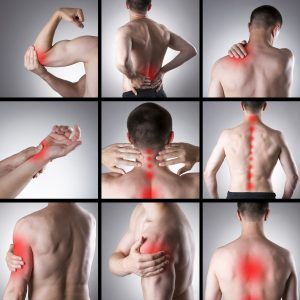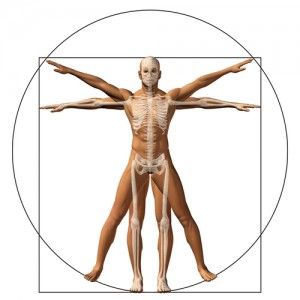Benefits

Yoga and Movement Therapies - An Overview
Moving with Awareness: The Benefits of My Somatic-Based Yoga Therapy
A mindful, awareness-based therapeutic approach to restoring comfort, coordination, and confidence in how you move.
What Brings People to This Work
People come to this work for many reasons. Some are living with pain that hasn’t fully resolved. Others want to move better, prevent surgery, or feel more stable and at ease in daily life.
Over the years, clients have used this approach to:
Ease back, hip, neck, or shoulder pain
Reduce stiffness or joint discomfort, including arthritis-related pain
Improve posture, balance, and comfort in walking or standing
Support recovery and better outcomes after surgery
Prevent recurring injuries or delay surgery by improving movement coordination
Feel calmer, looser, and more at ease in their bodies
Breathe more fully and move with greater confidence
Reconnect with a sense of well-being they thought was lost
Many describe this as “getting their body back.”
Some experience lasting relief. Others gain tools to manage discomfort when it returns. Either way, movement and daily life begin to feel more natural and within reach again.
When movement reorganizes, meaningful change often follows.
A shoulder relaxes that hasn’t in years.
Walking feels lighter.
The breath deepens without effort.
The sense of struggle begins to soften.
What This Work Is
This is yoga approached through a somatic lens . A view that values sensing and awareness over forcing and stretching. Rather than chasing flexibility, you learn to sense how your body organizes movement. As coordination improves, flexibility often returns naturally.
Through slow, guided exploration, your nervous system learns to release unnecessary tension and rediscover balance.
Nothing is imposed or corrected. You are learning to move and sense differently so your system can reset itself in a way that feels sustainable. Over time, effort gives way to ease. Strength feels grounded, not forced.
You begin to inhabit your body with more clarity, curiosity, and trust.
What You May Begin to Notice
Movements that once felt stiff start to feel lighter and easier
Less tightness or pain when sitting, walking, or bending
More stable balance and coordination
Strength that feels steady rather than tense
Easier breathing and a calmer nervous system
Renewed confidence in how you move and feel
Some people find that discomfort fades completely. Others notice it loses its hold.
What matters most is learning to work with your body, not against it.

What This Work Is
This is yoga approached through a somatic lens. It is a way of exploring movement that values sensing and awareness over forcing or striving. Current research in neuroscience and movement education supports what this approach has shown for decades: real and lasting change begins with awareness, not effort.
Rather than reaching for flexibility, you invite it through attention and release. As your nervous system learns to let go of chronic tension, it begins to restore the natural coordination that can fade through pain, stress, or habit. Range of motion may expand. Movement can begin to feel more fluid and connected.
Through slow, guided exploration, you learn to sense and move in new ways. Nothing is imposed or corrected. Your system lets go of what it no longer needs and starts to rediscover balance from within in a way that feels natural and sustainable.
Over time, effort softens into ease. Strength begins to feel grounded rather than forced. You start to live more fully inside your body, with curiosity, clarity, and trust that grows through experience.
How Mindful Awareness in Movement Can Influence Stress and Mood
In both somatic and yoga-based traditions, body and mind are understood as one continuous system.
As movement begins to reorganize, breathing deepens almost on its own. The energy once held by worry or effort can start to release. Sometimes the change is quiet. Sometimes it feels like an easing from the inside out.
Over time, the nervous system may begin to settle. What once felt heavy can start to move again. The baseline for stress and mood can shift in ways you sense but might not easily describe. You may feel more present, more responsive, or simply more yourself.
Supporting Performance and Creative Expression
Many people discover that as foundational movement improves, so does how they express themselves in what they love to do.
There may be fewer hitches or subtle restrictions that once limited full expression. A golf swing flows with less strain. Tennis feels lighter. A musician breathes deeper. A dancer finds new rhythm. Even yoga becomes less about form and more about freedom.
When the body organizes more efficiently, coordination returns and expression opens. This approach refines the foundation beneath specialized training, allowing precision, timing, and creativity to emerge without force. The effort that once masked grace begins to fade, and what remains feels genuine and alive.
Why This Work Matters
Pain, imbalance, and fatigue often begin as the body’s way of protecting itself. For a time, those patterns help you cope. But when they stay, they start to limit movement and confidence.
This work helps you learn another way. Through awareness, your nervous system can release what no longer serves it and rediscover support that feels natural. It’s not medical treatment. It’s education through experience . It is a re-learning of how to move and sense yourself with clarity and ease.
When that learning takes hold, comfort becomes less rare. It begins to feel like home again.
Supporting Research
Fraleigh, S., & Koch, S. (2021). Body Awareness and Interoception in Chronic Pain. Frontiers in Psychology, 12.
Kuner, R., & Flor, H. (2016). Structural Plasticity and Reorganization in Chronic Pain. Nature Reviews Neuroscience, 17(1), 20–30.
National Center for Complementary and Integrative Health (NCCIH): Yoga and Mind-Body Approaches to Pain Management.
Start With a Conversation
If you’re wondering whether this approach might help, let’s talk. Schedule a Free Consultation to explore how we can work together to help you move and feel your best.
We’ll discuss what you’re experiencing, what you’ve tried, and how this work may fit into your care.
No pressure, just clarity and a chance to begin.
Call: (203) 488-1700
Email: alan@creativeedgeyoga.com
Educational Note
Somatic-based yoga therapy is an educational process, not a form of medical treatment. It works alongside your healthcare, supporting awareness, movement, and self-regulation. Always consult your physician before beginning any new movement program. Individual results may vary. Please read this site’s disclaimer for more information.
Serving the Greater New Haven and Connecticut Shoreline and online community for more than 25 years.
